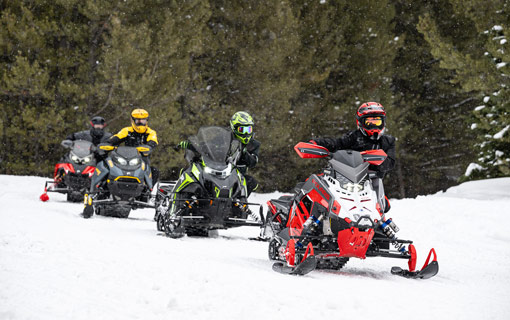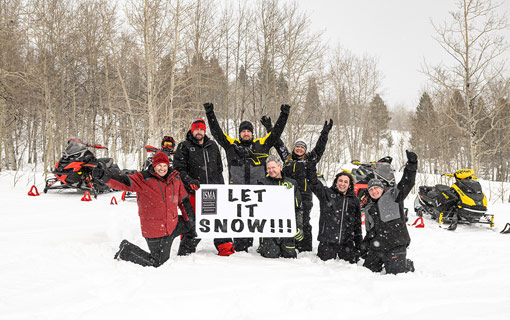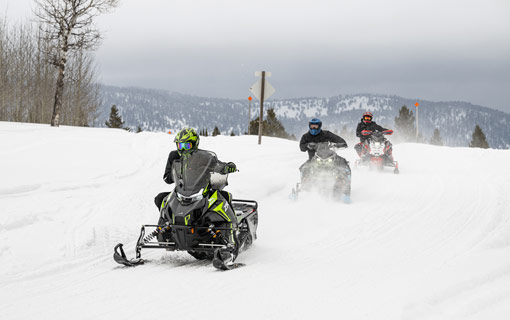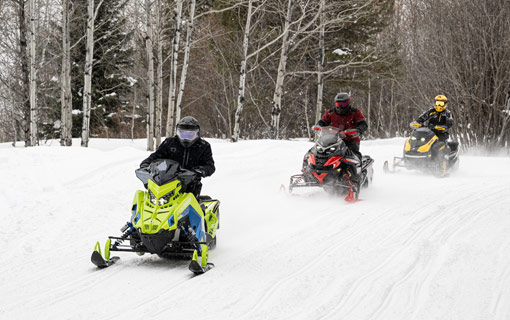Avalanche safety
Mountain riding is a fast growing activity for North American snowmobilers. With spectacular mountain terrains comes the added safety concern of avalanches. You can minimize your risk by taking an avalanche awareness course and carrying the proper equipment. If you don’t live in the mountains, but plan to ride there occasionally, you should prepare yourself before leaving. Here is some general advice and mountain riding pointers:
- Temperature inversions, rain and sun exposure can rapidly change conditions and trigger avalanches—snow loses strength as it warms.
- Avalanche bulletins cover large regions and describe the general conditions. Local variation is common and snowmobilers must remain vigilant in their analysis of the immediate conditions while riding.
- Always check the avalanche bulletin for your region before you go riding.
- Most avalanches occur in steep slopes of 30-60 degrees. Don’t park at the bottom of these slopes.
- If high-marking, go one at a time, with everyone else watching from a safe spot away from the potential avalanche run-out area.
- If someone gets stuck on a steep slope, give them time to free their sled. Adding another snowmobile to the slope could start an avalanche.
- Always wear an avalanche transceiver—and practice using it. Carry a shovel and probe in a small backpack. Your best chance of a successful rescue is if it’s done within your own party. There’s no time to seek outside help.
- “Fixation” on specific routes can lead to trouble—be open minded, well researched with options, and willing to retreat to try again another day.
- Please respect other park users in popular locations.
- Have fun and enjoy the beautiful mountain scenery!
- Take an avalanche class. These are available online and through various books and videos. But, it’s best to take a multi-day course on the snow.
- For information on avalanche classes, bulletins, and other resources, check these websites:
- www.avalanche.org (U.S.)
- www.avalanche.ca (Canada)

Below are 5 key safety guidelines when riding in avalanche country
- GET THE GEAR: Ensure everyone has an avalanche transceiver, shovel, and probe on their person and knows how to use them.
- GET THE TRAINING: Take an avalanche course.
- GET THE FORECAST: Make a riding plan based on the current avalanche and weather forecast.
- GET THE PICTURE: If you see recent avalanche activity unstable snow exists. Riding on or underneath slopes is dangerous.
- GET OUT OF HARM'S WAY: One at a time on all avalanche slopes. Don't go to help your stuck friend. Don’t group up in runout zones.
Avalanche safety video for snowmobilers
For The Love of Snowmobiling!
Photos & videos
Browse our collection of snowmobile safety videos, public service announcements and snowmobile photos.
Snowmobile safety
These safety resources will ensure your next ride will be a safe and fun one for all!
Posters & projects
Download exclusive snowmobiling posters and our fun kid activities!
News & events
Stay informed about the latest news about our favorite recreation and find a snowmobiling event in your state.














